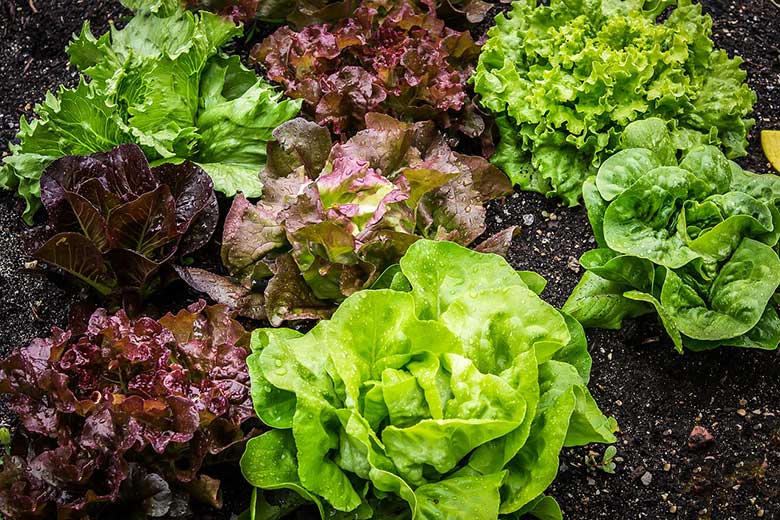 Understanding the Food System and Why it Needs to be Improved
Understanding the Food System and Why it Needs to be Improved
A story of how our food gets to our plates
Have you ever wondered where your food truly comes from? How far did your food travel to reach your plate? The food system includes all the processes required to feed the population. It starts from the very beginning with farmers growing our foods, to the final step of disposal of food. It can be seen as a soil-to-soil process.
A food system can be very small. For example, having a backyard garden where you grow all your salad-fix-ins: lettuce, cucumbers, and tomatoes. When preparing your salad, you take a short trip to your backyard to harvest your ingredients. The ingredients are then transported to your kitchen where you prepare and serve your salad.
A food system can also be grand and require a web of activities to get to your table. For example, table grapes, which are imported to the Caribbean. At the very beginning of this food system a farmer harvests tons of grapes. These grapes will then be transported to a processing area where they are washed and packed. They are then transported to wholesale retailers, who might be miles away who then distribute the grapes to restaurants and retail stores around the world, which are then purchased by consumers. Consumers then transport the grapes to their homes.
This is a simplistic glimpse into understanding our food system. It is a story of how our food chain starts from producing crops, livestock, fish, to transportation, processing, retailing, wholesaling, preparing and disposal.
How has it changed over the years?
Our food system has changed over the years, as our palates have evolved (often to a more westernized diet pattern), technological advancement, as globalization has occurred and entrepreneurship has become more prominent. This change has granted us many advantages such as increased employment, decrease in food costs in some instances and accessibility to a global food market.
Our now evolved food system has also burdened our people and planet with multiple challenges. One of the main challenges is the cost of energy. In a food system depending heavily on importation, cost per kcal (energy) is expensive. Purchasing a cookie per kcal is cheaper than purchasing carrots per kcal. This means that the food system may unintentionally encourage the population to choose foods which are unhealthy and over processed as these foods are favorably priced. This transition has contributed to a population suffering from high rates of diabetes, obesity, heart disease, hypertension, and metabolic syndromes. This type of food system forces our people to choose a diet that is high calorie (as opposed to nutrient dense), high fat, high sodium, and low fiber- the perfect mix for the development of non-communicable diseases (NCDs).
Another challenge with the current food system is the long distance between farm and table, which requires large amounts of fossil fuels, which produce greenhouse gas (GHG) emissions that contribute to climate change. The production of livestock which is also responsible for large amounts of GHG emissions through feed production, enteric fermentation, animal waste and land.
We should aim to have a food system that is beneficial to our people and planet. Our food system should provide foods that are nutritious, healthy, and safe. The system should be productive, efficient, and sustainable. It should tackle issues of malnutrition, poverty, and food-insecurity.
What we can do TODAY to improve our food system
Producers, consumers, and policy makers must meet today to create a system that is valuable to our future Caribbean.
A farm to table approach must be encouraged where our goal is bringing our farm as close to our table as possible. Doing this allows us to reap a range of benefits. It decreases the amount of transportation needed, which decreases the amount of greenhouse emissions released in the environment, which in turn positively contributes to our fight against climate change. Food which is harvested nearer to you also increases the nutrition value.
It a huge task to recreate the food system, but here are three things you should do to be a part of the solution:
- Become a locavore (or as close as you possibly can) Shop at local markets or purchase your foods directly from farmers and meat/ fish markets. Develop a diet for your families full of locally grown foods. In the Caribbean we have a range of underused foods. Get creative and create new meals which support a local food system.
- Start a backyard gardenDecrease the carbon footprint of your food by starting a backyard garden. You may start small and only grow a row of lettuce heads- but this helps! Expand your garden as time goes and begin to share your harvest with friends and families. Urge them to do the same.
- Tell 3 friends or family members about these two things they can do to improve the food system (and why they should)!
The food system will always continue to change, but we must constantly be reminded the premise of a food system is to provide healthy food and nourishing meals to our people. If we lose focus on this goal, we will continue to raise a population fighting NCDs.
Janea Ifill is a registered nutritionist and recent BSc Nutrition and Dietetics (Hons) graduate from University of the Southern Caribbean. She practices in a private dietitian’s office in Barbados where she guides persons to manage and prevent health conditions such as diabetes, hypertension, obesity etc. through living a healthy lifestyle. Janea is a Healthy Caribbean Youth advocate.
